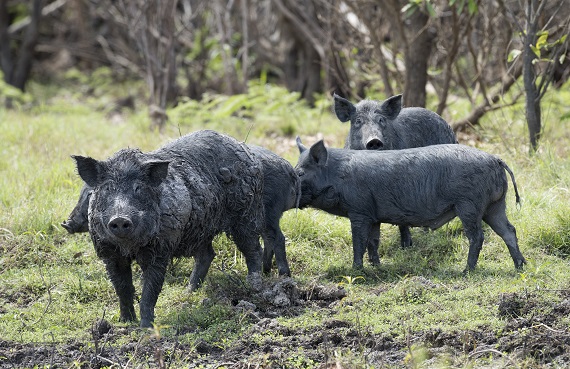
Managing pest animals in NSW
What are the threats?
Pest animals present a significant threat to our biosecurity, biodiversity and economy, environment and community wellbeing.
The community and land managers feel the impacts of pest animals because they can:
- prey on livestock and wildlife
- increase grazing pressure on pastures
- damage crops and plants
- compete with native wildlife for food and habitat
- spread diseases to people and other animals (including stock and pets)
- damage fences and other infrastructure.
Your general biosecurity duty
As well as prescribing the rules for high risk biosecurity matter, the Biosecurity Act 2015 includes a biosecurity duty for land managers and everyone who deals with biosecurity matter.
This means that all tiers of government, industry and the people of NSW need to work together to protect the economy, environment and community from the negative impacts of pest animals.
This means land managers need to:
- know about your biosecurity risks
- know what action should be taken to manage these risks (Your regional strategic pest animal management plan will provide guidance on the outcomes expected to discharge your duty)
- take effective action to manage the risks relevant to you.
Land managers are supported in managing biosecurity by NSW Department of Primary Industries, Local Land Services, other public and private land managers, community members and peak industry bodies.
Visit the General biosecurity duty page for more information.
Guiding principles
The following principles should be considered and implemented by all community, industry, landholders and other stakeholders in pest animal management.
Be alert
Monitor and report sightings of any species you have not seen in your area before. Prevention and early intervention from the community is important to avoid the establishment of new pest animal species.
Work together and participate
Pest animal management is a shared responsibility between landholders, community, industry and Government and requires a coordinated approach across a range of scales and land tenures.
Be committed
Effective pest animal management requires ongoing commitment by land managers, community, Government and industry. Those that create the risks associated with pest species and those that benefit from the pest animal management outcomes should help to minimise impacts and contribute to the costs associated with management.
Stay up-to-date
Community, industry, government and landholders should stay up-to-date with new information to ensure that contemporary best practice pest animal management activities are employed to reduce pest animal impacts in a way that is as safe, effective, target-specific and humane as possible.






